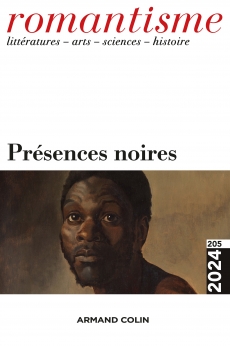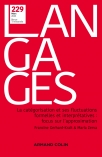
ROMANTISME N°205 (3/2024)
Pour acheter ce numéro, contactez-nous
Recevez les numéros de l'année en cours et accédez à l'intégralité des articles en ligne.
Cet article se propose d’analyser l’image de la foule noire dans le roman d’aventure, au croisement des impératifs génériques qui viennent structurer l’utilisation du stéréotype. En tant qu’élément spectaculaire, elle vient construire une typicité africaine, investissant des tropes descriptifs pour les insérer dans une narration marquée par des péripéties violentes. Nous cherchons à analyser l’usage de ce stéréotype dans le roman d’aventures en étudiant son fonctionnement sémantique, pour montrer comment il s’insère dans les formes populaires de l’exotisme dans la seconde partie du XIXe siècle. Informée par une lecture brutale de la confrontation des « races », la stéréotypie associée à la foule prend alors part, depuis le récit, aux discours impériaux en métropole.
This article focuses on the representation of Black crowds in metropolitan popular fiction, between 1863 and 1920. The use of this literary stereotype is analyzed as an element of violent entertainment and picturesque description, constructing a literary discourse on Africa and Africans, within the popular genre. Geographical novel thereby holds a paradoxical place in the “colonial library”, infusing its representation with racist tropes, and serializing a common narrative about Black peoples. This representation of African crowds fuels a literary interpretation of the idea of “race”, as purely antagonistic, and therefore participates in the imperial metropolitan discourse.

